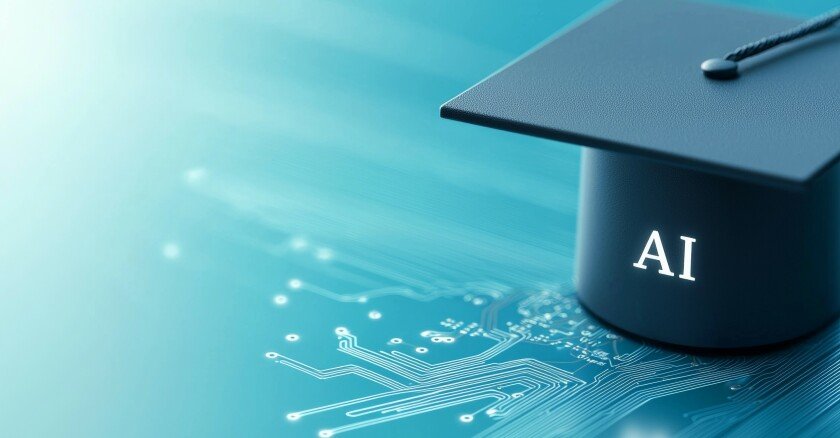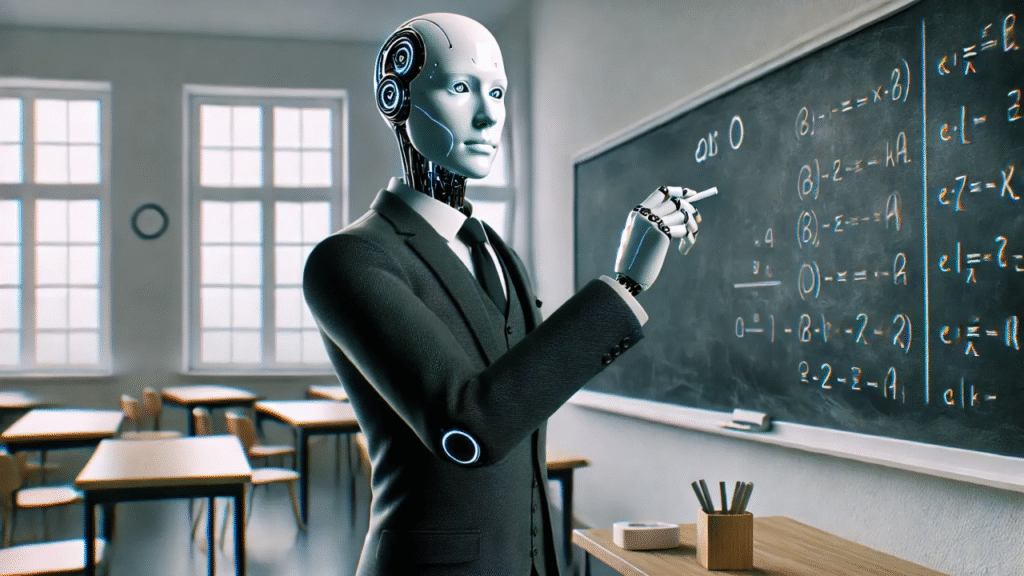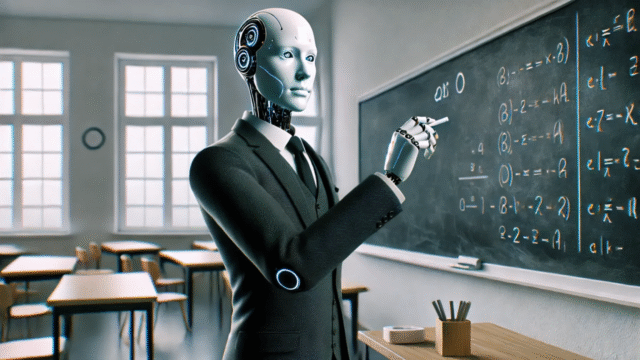As AI tools become ever more common in classrooms, one narrative has dominated: that artificial intelligence (AI) is here to save teachers time. But what if that framing misses the point? What if AI’s true power in education lies somewhere deeper, more transformative—and less immediately obvious? In this piece, we explore why the real value of AI in education is not just in relieving workloads, but in reshaping how, what, and why learning happens.
Table of Contents

From Chore Relief to Teaching Reinvention
When people talk about AI in schools, they often mention grading, report writing, and attendance tracking—tasks that are time-hungry, tedious, and often demoralising for educators. Yes, AI can automate those tasks. It can reduce the hours teachers spend crunching data or cutting and pasting feedback. That is real, welcome relief.
But focusing only on that relief risks overlooking what’s possible when we use AI not just to speed things up, but to reimagine the whole teaching process. Instead of seeing AI as a shortcut, consider it a lever for transformation.
For example, imagine AI systems that understand how individual students learn—not simply their test scores, but their pace, their misconceptions, their emotional hooks. AI can enable adaptive learning pathways, where students who grasp concepts quickly move forward, while those who need more time are given support. That means learning becomes personalised, not just efficient.
Also, AI can allow educators to focus their energy on the human side of teaching: building curiosity, guiding critical thinking, engaging discussions, and ethical reasoning. Time saved from administration does not have to be used just for more marking—it can be invested in meaning. In mentoring, in inspiring, in helping learners become not only knowledgeable but thoughtful and inventive.
The Risks of Over-Speeding Learning
But it is not enough to say that more speed is better. In fact, accelerating learning without depth can do more harm than good.
Educational research shows that struggle, challenge, error—all the slower, sometimes harder parts of learning—are integral to long-term understanding. If students are simply given answers by AI, or always work at maximum speed, they may miss the chance to wrestle with ideas, to reflect, to build resilience. Those qualities—persistence, analytical thinking, creativity—come from effort, not escape.
AI that pushes learners forward too fast might breed superficial understanding. It may inflate short-term gains, but at the cost of conceptual foundations. Worse, it could undermine student agency: the ability to question, to doubt, and to discover. If the AI does too much, students may become passive consumers of knowledge rather than active knowledge-builders.
In Nigerian schools (and indeed across Africa), where educational traditions often emphasise memorisation and exam performance, there is already a danger that AI will be used simply to churn out better exam answers. The true power lies instead in using AI to deepen conceptual learning, to foster creativity, to encourage students to ask “why”, not just “how”.

Human Connection at the Core
AI cannot replace the human touch. Even the smartest AI systems cannot replicate empathy, moral guidance, cultural nuance, or the belief-building that teachers bring every day.
One important aspect is feedback. AI can give students rapid feedback on grammar, calculations, and factual mistakes. But can it understand when a student is discouraged, anxious, or simply burnt out? Can it sense the underlying causes of a poor performance—issues outside the classroom, difficulties with confidence, lack of resources or supportive environment? That is what human teachers do best.
Another aspect is motivation. Teachers inspire. They tell stories, draw connections with local realities, challenge unfairness, and celebrate small victories. AI can suggest tasks or measure progress, but it cannot truly celebrate, nor can it share in the struggle in the same way. The student’s sense of belonging, of being seen and valued, often matters most—and that comes through human interaction.
There is also the question of ethics: bias in algorithms, fairness, and privacy. If AI tools are trained on data skewed toward certain contexts, they may perpetuate inequalities. Care, judgement, transparency, and oversight are required—and those are human responsibilities. In Nigeria, where resource disparity is real, we must ensure AI does not magnify gaps but helps close them.
Looking Forward: What Should Be Prioritised
If we accept that AI’s true power in education is more than saving time, what priorities should guide its deployment?
1. Personalised Learning that Respects Pace
Systems should adapt to each learner’s speed. Some students will need more time; others less. Curriculum design must allow flexibility, with AI supporting scaffolding and remediation—not rushing students ahead.
2. Teacher Training and Support
Teachers must be equipped, not just with tools, but with understanding: how AI works, its limitations, how to integrate it ethically and effectively. Professional development must emphasise pedagogy more than just technical usage.
3. Curriculum Rethinking
Rather than building AI to do existing tasks more efficiently, we should use it to redesign what education is for. Less about rote learning; more about critical thinking, problem-solving, creativity, and collaboration. Education that prepares students for a world where knowledge is abundant, but judgment, adaptation, and innovation are rare and precious.
4. Ensuring Access, Equity and Trust
For AI to realise its potential, it must be equitable. That means infrastructure, internet access, devices, but also culturally relevant content. It means involving local educators and communities in design. It means being transparent about how data is used, who benefits, and how algorithms make decisions.
5. Human-Centred Assessment
Assessment should go beyond exams and grades. AI can enable richer forms of assessment—portfolios, projects, peer-assessment, reflective practices—that reveal deeper learning and growth. The goal is to assess what students can do, not just what they can remember.

Conclusion
AI’s true power in education lies not simply in freeing up teachers’ hours. It lies in how those hours are used. It is found in the possibility of transforming learning into something more individual, more humane, more reflective, more creative. It is found in reclaiming what matters: understanding, curiosity, resilience.
In Nigeria, as in many other countries, we stand at a crossroads. On one path is the hurry to adopt AI tools simply to save time and deliver results by familiar metrics. On the other path is a vision of education renewed: where time saved becomes space for mentorship, where faster tools yield deeper understanding, where human connection remains at the heart.
If that is the path we take, the real power of AI in education will shine—not for what it saves, but for what it creates.
Join Our Social Media Channels:
WhatsApp: NaijaEyes
Facebook: NaijaEyes
Twitter: NaijaEyes
Instagram: NaijaEyes
TikTok: NaijaEyes














![Mr Macaroni Drops Blistering Remark: ‘APC Filled with Most Corrupt People’ as He Slams Tinubu’s Controversial Pardon for Criminals=]] Mr Macaroni](https://naijaeyesblog.com/wp-content/uploads/2025/03/Mr-Macaroni-1-1-180x135.avif)

![Chaos Erupts in Abuja Hotel as BBNaija Star Phyna Sparks Fierce Scene Over Alleged N200,000 Dispute [VIDEO] Phyna](https://naijaeyesblog.com/wp-content/uploads/2024/11/A-Picture-of-Phyna-BBNaija-180x135.jpg)























